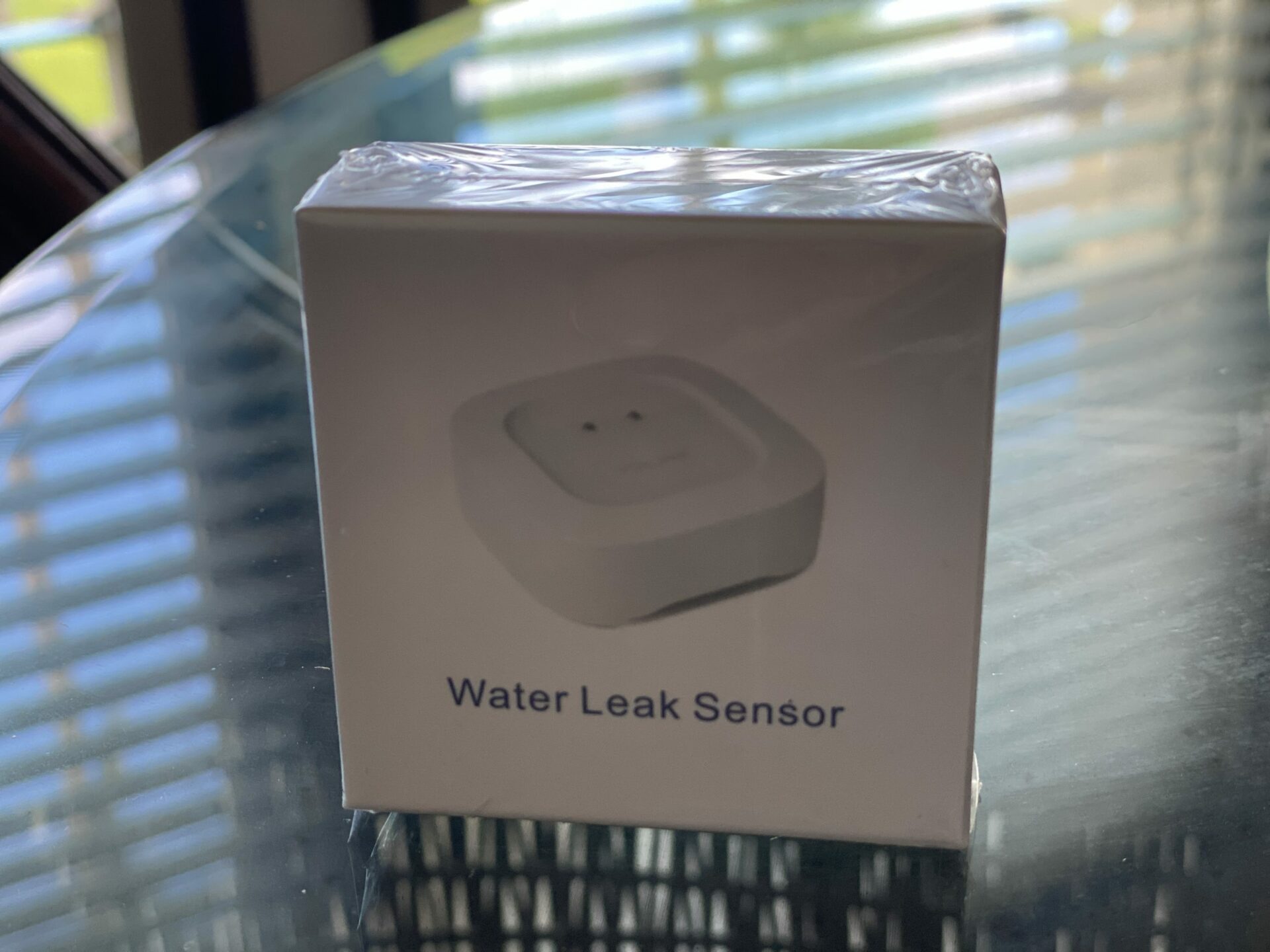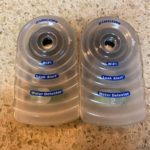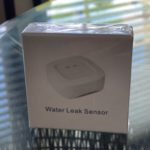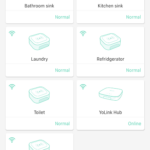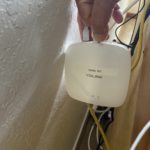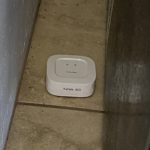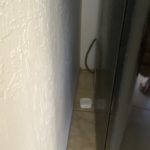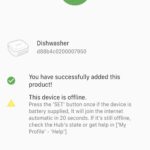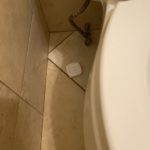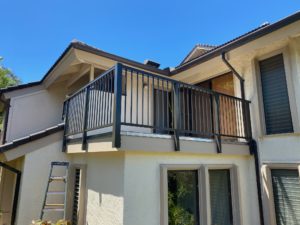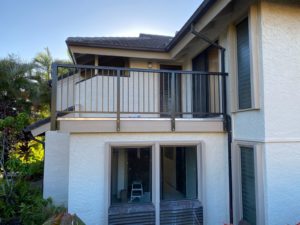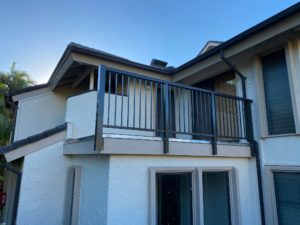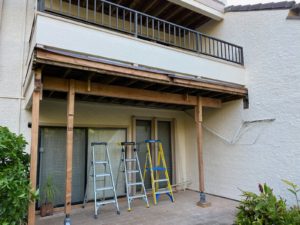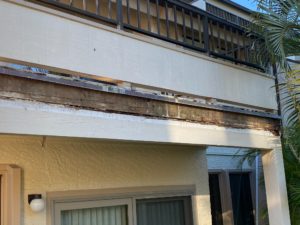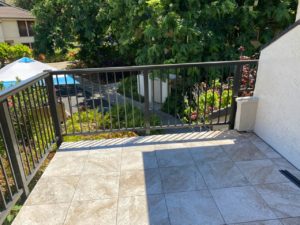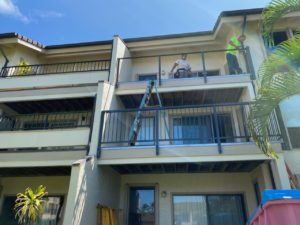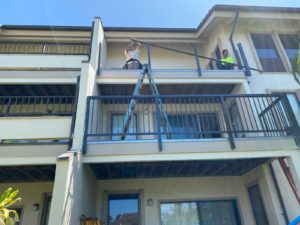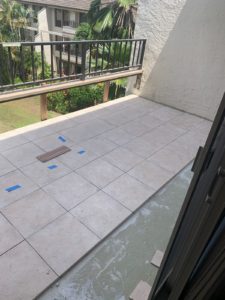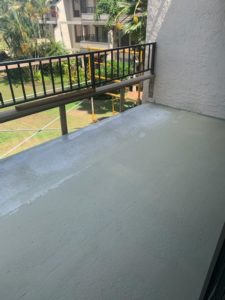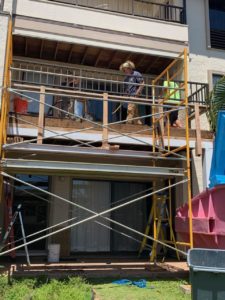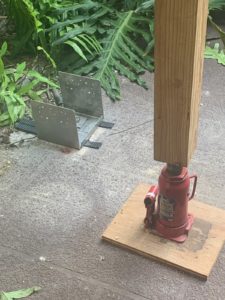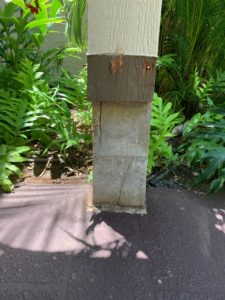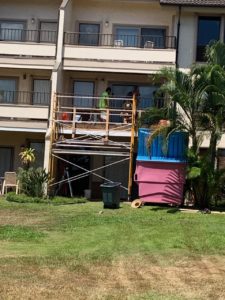MAJOR RENOVATION OF KAHALA LANAIS
Kahala was built in the late 1970s and the Board has been concerned about lanai integrity for
several years.
As you know, the Board initially thought the installation of new railings and gutters would be all
we would need to do initially to improve the integrity of the lanais. And we began efforts in
2019 to address the issue.
The Board engaged the services of an Architect, Andrew Lynch, to assess how new railings and
new gutters could be installed to mitigate water damage. He engaged a structural engineer,
gutter expert and a railing contractor to agree on an integrated design. Earlier this year we
asked owners to vote on the railing design they preferred.
But in the middle of this effort, we discovered in April 2020 that the wooden support structures
for lanais on the second floor of several units in Building 5 were completely rotten and had to
be replaced immediately. We obviously determined that attaching new railings and gutters to
rotting wood would not be safe.
We hired a general contractor to immediately repair the structural beams in building 5. As the
general contractor tore out the rotten wood support structures in building 5 he determined
that the dry rot had occurred over a long period of time and was caused by numerous factors
that allowed water to leak into the structural supports:
The deterioration of flashing used on lanais,
The end of the life span of the tile and membranes on the lanais,
The removal of gutters from the lanais,
The failure of flashing on horizontal support beam.
As a result of these findings, the Board asked the general contractor to examine the integrity of
ALL support structures for all 62 lanais.
He determined that 27 lanais have serious dry rot of their wooden structural support
beams—this is about 47% of all our lanais. The Board has engaged him to immediately replace
and repair all the supports for these 27 lanais and he has begun the work.
But discussions with our general contractor, architect, railing and gutter contractors, and our
Property Manager, led the Board to conclude that the root cause of the water leakage would
continue if we did not address all the causes at one time and eliminate the problem.
Additionally, we all assumed that dry rot will happen to all the other lanais that are not yet
exhibiting structural support problems because they all were similarly constructed. In short, it is
just a matter of time before we would have more problems that would erode the integrity of
more lanais.
To support this assumption, we note that about 8 years ago the support beams for lanais in
building one were all replaced because of dry rot caused by water leakage. Only the beams
were replaced. No other actions, such as tile replacement, membrane replacement, flashing
replacement, or new gutters, were taken. Today ALL the beams replaced about 8 years ago
have significant dry rot and must be replaced again. The ceiling structures of the lanais (looking
up from the ground floor) were removed by our contractor and showed that drywall sheets had
been installed inside, probably as soundproofing. But the drywall sheets were soaked with
water and had no way of drying, contributing to the wood dry rot.
The Board therefore is taking the following action:
1. We are repairing the structural supports for all 27 lanais this year. This work will be paid from
reserve funds already designed for lanai railing replacements.
2. We are developing a prototype overall solution that includes installation of a new
membrane, new tile, new flashing, new railing, and new gutters on two lanais in building 5–523
and 533—as well as replacing the ceiling structures.
Once this work is done and costs are
determined, the Board will use this data to estimate the overall cost to repair all Kahala lanais
and work with Hawaiiana to negotiate a long-term loan from a Hawaiian financial institution to
finance the project. The owners will have to vote to approve using a long-term loan for this
effort. If the owners do not approve using a long-term loan to finance this effort we would have
to levy a special assessment on all owners. The Board does not want to make a special
assessment. But even with a long-term loan, AOAO dues will have to be raised to cover the
amortized cost of repaying the loan. We will have more details on financing this fall.
3. Our goal is to have the prototypes completed before the owners meet this fall to review the
needed budget and approve our plan to secure a long-term loan to finance this effort. The
owners will be able to look at the prototypes to see what will be done for all lanais as well as be
better informed as to the overall project cost.
The Board has received a legal opinion from our General Counsel that the Association should
pay for all needed repairs to lanais, including tile and support structures, because all are
integral to the overall stability and integrity of Kahala buildings.
We look forward to discussing this with everyone at our October 2020 meeting. Let us know if
you have any questions or issues we can address before then.
Gordon LaBedz, President Kahala AOAO
